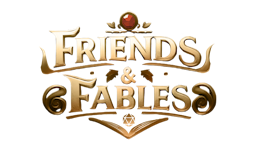The kingdom of Alefgard has been overrun by the evil Dragonlord who commands an army of dragons.
| Played | 12 times |
| Cloned | 0 times |
| Created | 260 days ago |
| Last Updated | 93 days ago |
| Visibility | Public |

Description
When you cast this spell, you inscribe a glyph that harms other creatures, either upon a surface (such as a table or a section of floor or wall) or within an object that can be closed (such as a book, a scroll, or a treasure chest) to conceal the glyph. If you choose a surface, the glyph can cover an area of the surface no larger than 10 feet in diameter. If you choose an object, that object must remain in its place; if the object is moved more than 10 feet from where you cast this spell, the glyph is broken, and the spell ends without being triggered. The glyph is nearly invisible and requires a successful Intelligence (Investigation) check against your spell save DC to be found. You decide what triggers the glyph when you cast the spell. For glyphs inscribed on a surface, the most typical triggers include touching or standing on the glyph, removing another object covering the glyph, approaching within a certain distance of the glyph, or manipulating the object on which the glyph is inscribed. For glyphs inscribed within an object, the most common triggers include opening that object, approaching within a certain distance of the object, or seeing or reading the glyph. Once a glyph is triggered, this spell ends. You can further refine the trigger so the spell activates only under certain circumstances or according to physical characteristics (such as height or weight), creature kind (for example, the ward could be set to affect aberrations or drow), or alignment. You can also set conditions for creatures that don't trigger the glyph, such as those who say a certain password. When you inscribe the glyph, choose explosive runes or a spell glyph. **Explosive Runes.** When triggered, the glyph erupts with magical energy in a 20-foot-radius sphere centered on the glyph. The sphere spreads around corners. Each creature in the area must make a Dexterity saving throw. A creature takes 5d8 acid, cold, fire, lightning, or thunder damage on a failed saving throw (your choice when you create the glyph), or half as much damage on a successful one. **Spell Glyph.** You can store a prepared spell of 3rd level or lower in the glyph by casting it as part of creating the glyph. The spell must target a single creature or an area. The spell being stored has no immediate effect when cast in this way. When the glyph is triggered, the stored spell is cast. If the spell has a target, it targets the creature that triggered the glyph. If the spell affects an area, the area is centered on that creature. If the spell summons hostile creatures or creates harmful objects or traps, they appear as close as possible to the intruder and attack it. If the spell requires concentration, it lasts until the end of its full duration.
| Level | 3 |
| Range | 1 |
